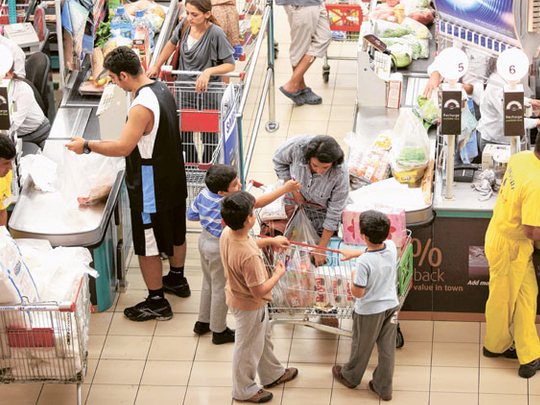
Dubai: Did retail rentals in the Middle East buck the global trend and actually go through another round of decline in the first six months of the year? The answer varies depending on who the question is put to.
According to a new Cushman & Wakefield report which tracks the global trends in the retail space over the first-half of the year, mall and shopping centre lease rates in the Middle East "failed to match the positive trend seen elsewhere". In fact, the overall growth stagnated at the levels seen in 2009 and 2010.
"In contrast to the rebound observed in other regions, prime rents either fell or remained stable in most cases," the report added.
Obviously, the regional situation severely crimped the hand of mall owners, with drops of 26.7 per cent in Bahrain, 16.7 per cent in Syria and 7.7 per cent in Jordan. Qatar and the UAE recorded less significant declines of 2.2 and 3 per cent respectively, according to the report.
Political unrest
"Following the unrest starting in Northern Africa and parts of the Middle East, the retail market has been affected by a reduction in tourist spending and a reluctance of retailers to progress with expansion," it said.
"Countries such as Egypt and Saudi Arabia, which were previously seen as potentially viable emerging markets by retailers, have now gone down the list of targets as a result of recent political unrest in the region. On the flip side, however, such developments may facilitate the modernisation of the regional economy and lead to the arrival of more international retailers in the future.
"Indeed, a number of plans have now been postponed and, as a consequence, have adversely affected leasing activity. The downward pressure on rents also stemmed from an oversupply of retail space, with the surplus especially evident in the Gulf markets, where development has been highest.
"Combined with the comparative monopoly of a handful of local franchisees, which control the majority of brands, this has produced a more subdued growth picture."
But industry sources in the UAE paint a slightly different picture on rental trends in the marketplace. "Showroom rents have declined slightly in Saudi Arabia, although at mall locations at UAE, Kuwait, Doha and Muscat, rents have either stabilised or increased," said Manu Jeswani, director at the Landmark Group and responsible for negotiating its leasing relationships in the GCC.
"The newer malls and high-street locations is where we clearly see latitude in availability and pricing. As a large player in the retail segment, we look forward to a respite in the rentals and a price correction to negate the impact of the recession and lower pricing."
Opportunity
A view shared by Ajai Dayal, a senior retail industry specialist. "It is a fact that mall managements are closely tracking the sales figures of their tenants; so they already know if someone is suffering," he said. "In a way this helps because, if the operator is trusted or the brand is good, landlords are at least willing to talk and try to find a solution, i.e., relocating to a less expensive area, or resizing the outlet to reduce the square footage.
"It is also an opportunity for them to juggle around their outlet mix at this time. A couple of the major malls have proactively held rentals at the same level or even proposed small reductions at renewal time to encourage stores that they want to stay on.
"But overall, rentals do not seem to be coming down."
Dubai Indifferent shopper sentiments and particularly dire economies did not prevent mall owners in North America and western Europe from raising lease rates during the first half of the year.
In North America the rise in rents was about 7.4 per cent in the year to June, helped by a sharp 11 per cent increase in the US on mall and shopping centre leases, according to a new report from Cushman & Wakefield, the real estate consultancy. This was led by strong shopper demand in the luxury end of the retail space as well as the helping hand provided by increased tourist arrivals spending more of the weakening dollars.
All this ensured that New York's Fifth Avenue retained its status as the world's leading hotspot, followed yet again by Hong Kong's Causeway Bay and Tokyo's Ginza district, the report added.
Moving to Europe, the western half of the continent saw rentals in the prime commercial location inch up by 2.4 per cent, led by Germany which experienced an 11.8 per cent increase in the first half. Even in the UK, where an economic recovery still seems to be elusive, malls and shopping centres recorded a near 6 per cent increase in lease rates.
"The prime segment of the European occupier market proved resilient over the past 12 months, despite a volatile recovery and fragile consumer sentiment," said the report. "Following the notable decline observed in 2009-10, rents in the region rose by 1.9 per cent as only five of the 27 markets surveyed recorded falls and 16 saw rents rise."
As for the Asia-Pacific zone, the retail sector continues to put in sufficient growth numbers even amidst a general slackening of the economies. With no surprises, China easily led the way as the world's leading luxury brands continue to accord lavish attention on the market.










